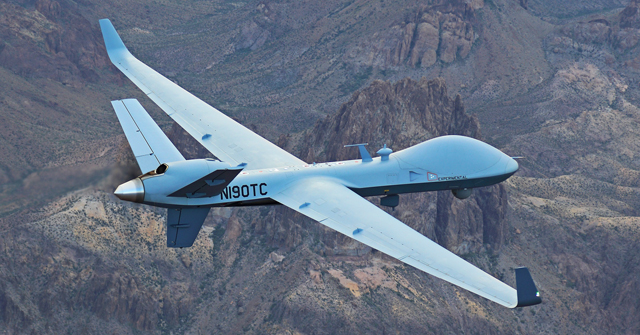General Atomics Aeronautical Systems successfully conducted lightning tests on its second full-scale MQ-9B SkyGuardian at its facility in Poway, California in May 2018.
The lightning tests are a necessary step for the unmanned aerial vehicle to earn airworthiness certifications from military and civilian authorities. The test was conducted jointly between engineers from GA-ASI and NTS Pittsfield, a lightning testing company.
MQ-9B is GA-ASI’s latest evolution of the Predator UAVs series. Its development was the result of a five-year company-funded effort to deliver a remotely piloted aircraft that can meet the airworthiness certification requirements of various military and civil authorities, including the UK Military Airworthiness Authority and the USA’s FAA.
“One of the important design goals for MQ-9B is to deliver a (remotely piloted aircraft) that can be certified to fly in national airspace,” said David R. Alexander, president of Aircraft Systems for GA-ASI. “The successful completion of these lightning tests is an extremely important step towards achieving airworthiness certification in segregated airspace.”
The same lightning protection technology used on the MQ-9B will be used by GA-ASI for its proposed MQ-25 unmanned aerial refueling tanker for the US Navy.

GA-ASI said it created the lightning protection system for the UAV by constructing a Faraday cage within the structure of the aircraft using a copper mesh. The protection adds a little weight, but is a minimal amount that was taken into consideration during the initial design and does not change the published performance parameters of the aircraft, the company said.
As part of the tests, a current was injected onto the aircraft structure, simulating a direct lightning strike. The current flowed along the aircraft structure and exited from a predetermined return location.
Results from the test verified the effectiveness of the lightning protection design, said GA-ASI. The full-scale test was used to confirm the interactions between the airframe structure, integrated equipment and cabling configuration in the event of a lightning strike.
Source: FlightGlobal.com



















